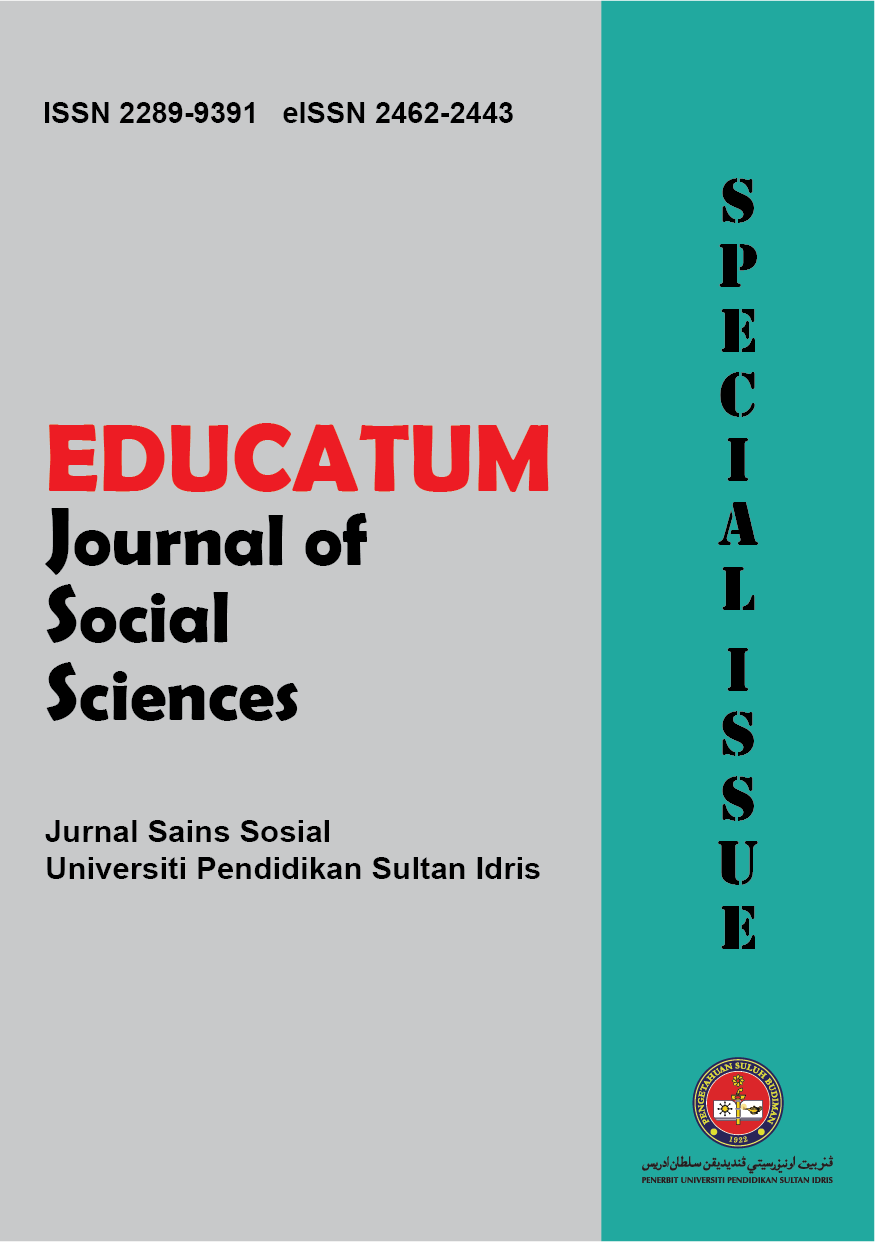The Relationship between Regulatory Focus and Creativity among Undergraduate Students at UPSI
DOI:
https://doi.org/10.37134/ejoss.vol11.sp.10.2025Keywords:
Regulatory Focus, Promotion Focus, Prevention Focus, CreativityAbstract
This study focused on examining the correlation between regulatory focus and creativity among undergraduate students at UPSI, Malaysia. Using a convenience sampling, the study utilized an online-based survey administered through Google Forms. A total of 153 undergraduate students, aged between 18 to 29 years participated. Participants were required to complete a set of questionnaires that encompassed demographic information, an assessment of regulatory focus using Regulatory Focus Questionnaire (RFQ), and an evaluation of creativity using Person-Environment Fit Scale for Creativity (PEFSC). Results showed that there was a significant positive correlation between the promotion focus and creativity, r (153) = .803, p < .001 whereas a significant negative correlation between the prevention focus and creativity, r (153) = -.711, p < .001. Additionally, the study identified a significant joint relationship between promotion and prevention focus on creativity, R² = .685, F(2, 150) = 163.271, p < .001. The implications of this study emphasize the importance of recognizing and accommodating students' regulatory orientations to enhance their overall academic success. However, further research is needed to explore other variables that may mediate the correlation between regulatory focus and creativity.
Downloads
References
Acar, S., Tadik, H., Myers, D., Van der Sman, C., & Uysal, R. (2021). Creativity and Well‐being: A Meta‐analysis. The Journal of Creative Behavior, 55(3), 738-751. DOI: 10.1002/jocb.485
Akpur, U. (2020). Critical, reflective, creative thinking and their reflections on academic achievement. Thinking Skills and Creativity, 37, 100683. DOI: 10.1016/j.tsc.2020.100683
Amabile, T. M. (1996). Creativity in context. Boulder, CO: Westview Press.
Amabile, T. M., Conti, R., Coon, H., Lazenby, J., & Herron, M. (1996). Assessing the work environment for creativity. Academy of management journal, 39(5), 1154-1184. DOI: 10.5465/256995
Baas, M., De Dreu, C. K., & Nijstad, B. A. (2011). When prevention promotes creativity: the role of mood, regulatory focus, and regulatory closure. Journal of personality and social psychology, 100(5), 794. DOI: 10.1037/a0022981
Fusco, L., Parola, A., & Sica, L. S. (2021). Life design for youth as a creativity-based intervention for transforming a challenging World. Frontiers in Psychology, 12, 662072. DOI: 10.3389/fpsyg.2021.662072
Geng, Z., Li, C., Bi, K., Zheng, H., & Yang, X. (2018). Motivating service employee creativity: regulatory focus and emotional labour. Journal of Service Theory and Practice. DOI: 10.1108/JSTP-11-2016-0214
Higgins, E. T., Friedman, R. S., Harlow, R. E., Idson, L. C., Ayduk, O. N., & Taylor, A. (2001). Achievement orientations from subjective histories of success: Promotion pride versus prevention pride. European Journal of Social Psychology, 31(1), 3-23. DOI: 10.1002/ejsp.27
Higgins, E. T., Nakkawita, E., & Cornwell, J. F. (2020). Beyond outcomes: How regulatory focus motivates consumer goal pursuit processes. Consumer Psychology Review, 3(1), 76-90. DOI: 10.1002/arcp.1052
Kark, R., Van Dijk, D., & Vashdi, D. R. (2018). Motivated or demotivated to be creative: The role of self‐regulatory focus in transformational and transactional leadership processes. Applied Psychology, 67(1), 186-224. DOI: 10.1111/apps.12122
Lam, T. W. H., & Chiu, C. Y. (2002). The motivational function of regulatory focus in creativity. The Journal of Creative Behavior, 36(2), 138-150. DOI: 10.1002/j.2162-6057.2002.tb01061.x
Lee, E. S., Park, T. Y., & Paik, Y. (2019). Does shared group identification lead to group creativity? Group regulatory focus as a moderator. Journal of Applied Social Psychology, 49(2), 117-129. DOI: 10.1111/jasp.12569
Li, C. R., Li, C. X., & Lin, C. J. (2018). How and when team regulatory focus influences team innovation and member creativity. Personnel Review. DOI: 10.1108/PR-09-2016-0236
Luo, N., Xin, X., Li, H., & Yu, X. (2021). regulatory focus, Boundaryless Mindset, and Creativity Among Chinese College Students: A Trait Activation Perspective. Frontiers in Psychology, 1628. DOI: 10.3389/fpsyg.2021.670394
Mehta, R., & Dahl, D. W. (2019). Creativity: Past, present, and future. Consumer Psychology Review, 2(1), 30-49. DOI: 10.1002/arcp.1044
Peng, J., Cao, F., Zhang, Y., Cao, Y., Zhang, Y., Zhu, X., & Miao, D. (2021). Reflections on motivation: How regulatory focus influences self-framing and risky decision making. Current Psychology, 40(6), 2927-2937. DOI: 10.1007/s12144-019-00217-w
Sen, S., Acar, S., & Cetinkaya, C. (2014). Development of the Person–Environment Fit Scale (PEFSC): A new measure of creativity. Psychology of Aesthetics, Creativity, and the Arts, 8(4), 433. DOI: 10.1037/a0037724
Shang, Y., Chong, M. P., Xu, J., & Zhu, X. (2019). Authentic leadership and creativity in China: The role of students’ regulatory-focused behaviors and supervisors’ power sources. Thinking Skills and Creativity, 34, 100592. DOI: 10.1016/j.tsc.2019.100592
Sulistiawana, J., Ekowati, D., & Putri, P. S. (2020). regulatory focus and employee creativity: The role of individual participation and intellectual stimulation. Systematic Reviews in Pharmacy, 11(12). Retrieved from https://bit.ly/3R2IoRD
Walia, C. (2019). A dynamic definition of creativity. Creativity Research Journal, 31(3), 237-247. DOI: 10.1080/10400419.2019.1641787
Wang, L., Cui, Y., Wang, X., Wang, J., Du, K., & Luo, Z. (2021). regulatory focus, motivation, and their relationship with creativity among adolescents. Frontiers in Psychology, 1422. DOI: 10.3389/fpsyg.2021.66607
Zhang, W., Ren, P., & Deng, L. (2020). Gender differences in the creativity–academic achievement relationship: A study from China. The Journal of Creative Behavior, 54(3), 725-732. DOI: 10.1002/jocb.387
Zou, L., Wei, S., Ke, W., & Wei, K. K. (2020). Creativity of participants in crowdsourcing communities: the effects of promotion focus and extrinsic motivation. Journal of Database Management (JDM), 31(3), 40-66. DOI: 10.4018/JDM.2020070103
Downloads
Published
Issue
Section
License
Copyright (c) 2025 Ng Hui Gek , Aroyewun Temitope Folashade

This work is licensed under a Creative Commons Attribution-NonCommercial-ShareAlike 4.0 International License.





